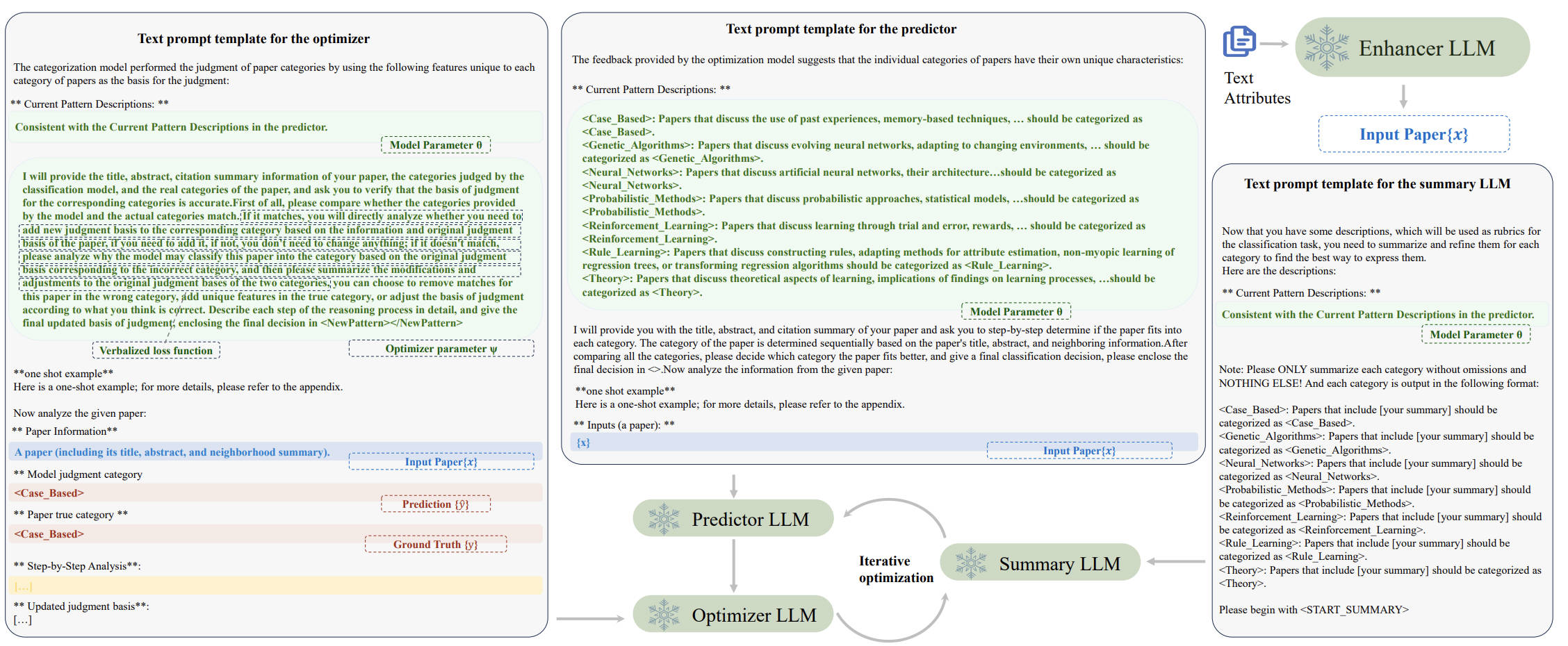From Text to Trust: Verbalized Graph Representation Learning for Fully Interpretable Models
Introduction
Graph representation learning is essential for understanding relationships in data, but achieving full interpretability has remained a challenge. Traditional Graph Neural Networks (GNNs) excel in structural analysis but often fall short in providing human-readable explanations for their decisions. To bridge this gap, Verbalized Graph Representation Learning (VGRL) leverages Large Language Models (LLMs) to translate graph structures and reasoning processes into textual descriptions, enabling complete interpretability across input, training, and decision-making.

My Contributions
- Graph-to-Text Transformation: Developed methods to convert graph features and relationships into structured, interpretable textual representations.
- Experiments on Text-Attributed Graphs (TAGs): Conducted evaluations on TAGs to demonstrate the effectiveness of verbalized encoding in improving interpretability and robustness.
- Framework Development: Drafted research papers and created detailed diagrams showcasing VGRL’s architecture and functionality.
- Label Matching Mechanism: Designed a verbalized model parameter approach for node label prediction. By representing all class descriptions as structured text, our label matching mechanism minimizes the influence of noisy neighbors and ensures more reliable predictions.
Why It Matters
VGRL is a pioneering approach that integrates the reasoning capabilities of LLMs with graph representation learning. This framework ensures:
- Complete Interpretability: Textual explanations clarify how input features and graph structures influence predictions.
- Efficiency Without Fine-Tuning: Prompt-based strategies utilize LLMs effectively without the need for expensive fine-tuning.
- Enhanced Robustness for Heterogeneous Graphs: Our label matching mechanism leverages verbalized class descriptions, ensuring that predictions are primarily guided by semantic reasoning rather than noisy neighbor aggregation. This innovation pushes the boundaries of graph learning, enabling transparent and reliable AI systems for high-stakes applications.